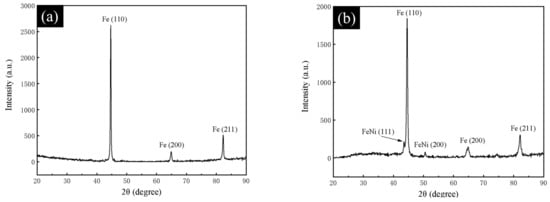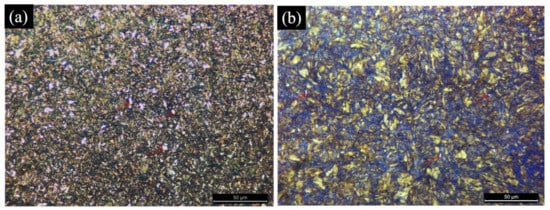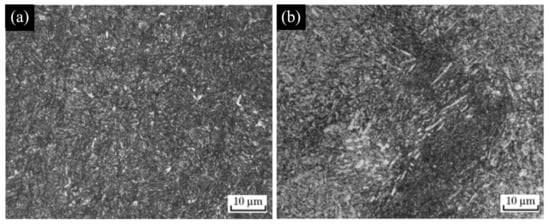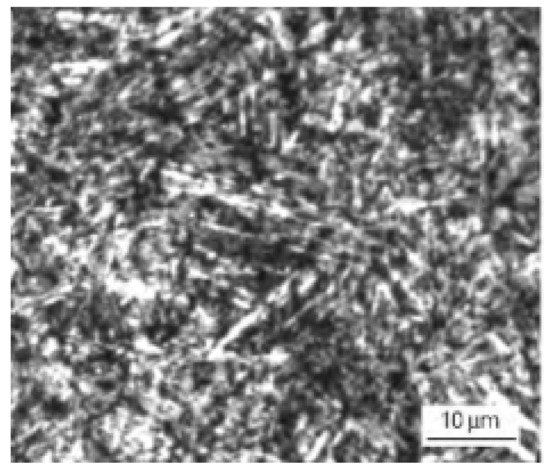Your browser does not fully support modern features. Please upgrade for a smoother experience.

Submitted Successfully!
Thank you for your contribution! You can also upload a video entry or images related to this topic.
For video creation, please contact our Academic Video Service.
| Version | Summary | Created by | Modification | Content Size | Created at | Operation |
|---|---|---|---|---|---|---|
| 1 | Constance Van Horne | + 2247 word(s) | 2247 | 2022-02-10 09:18:29 | | | |
| 2 | Nora Tang | + 64 word(s) | 2311 | 2022-02-16 02:07:52 | | | | |
| 3 | Nora Tang | Meta information modification | 2311 | 2022-02-17 07:34:09 | | |
Video Upload Options
We provide professional Academic Video Service to translate complex research into visually appealing presentations. Would you like to try it?
Cite
If you have any further questions, please contact Encyclopedia Editorial Office.
Van Horne, C. Development of Fencing Blade Materials. Encyclopedia. Available online: https://encyclopedia.pub/entry/19446 (accessed on 16 January 2026).
Van Horne C. Development of Fencing Blade Materials. Encyclopedia. Available at: https://encyclopedia.pub/entry/19446. Accessed January 16, 2026.
Van Horne, Constance. "Development of Fencing Blade Materials" Encyclopedia, https://encyclopedia.pub/entry/19446 (accessed January 16, 2026).
Van Horne, C. (2022, February 15). Development of Fencing Blade Materials. In Encyclopedia. https://encyclopedia.pub/entry/19446
Van Horne, Constance. "Development of Fencing Blade Materials." Encyclopedia. Web. 15 February, 2022.
Copy Citation
Using two fencing swords manufactured in Europe and China, we investigated the typical materials used for fencing blades and compared the experimental results with the nominal compositions of a variety of steels. By combining the requirements for the safety of athletes, mechanical behaviors of different steels, and production costs for industry, there is possible directions for the heat treatments and processing methods that have the potential to enhance performance and overcome the limitations of previous materials.
fencing blades
spring steels
maraging steels
1. Exploring the Material of the Blade
In the early days, the material used for fencing blades was carbon steel [1]. Because carbon steel is brittle and easily broken during matches, it is only used to fabricate blades which are used as props and decorations at present. In order to investigate the material selection of real fencing blades in detail, two types of blades that are currently used in training and matches were collected. One was produced in China and the other in Europe.
To detect the chemical composition, microstructure and micro-hardness of the two blades, a series of methods were applied. X-ray diffraction (XRD, Smartlab (9KW), Rigaku, Tokyo, Japan) experiments were performed to determine phase and crystal structure. A scanning electron microscope (SEM, Gemini 450, Zeiss, Cambridge, UK), which is attached with an Energy-dispersive X-ray spectrometer (EDS, Ultim 100, Oxford, London, UK) was used to obtain the chemical composition and microstructure. An optical microscope (OM, Zeiss AXIO vert.a1m) was employed to image the metallographic structure. Finally, a micro hardness tester (EM-1000VP, Hengyi, Shanghai, China) was used to obtain the micro Vickers hardness of blades. Five locations were randomly selected in each sample and the average value was taken. The load was 300 g and each loading lasted for 10s.
The XRD patterns of the two blades are given in Figure 1. The results illustrate that the major phase in both blades is Fe, with a body-centered cubic (BCC) crystal structure. Additionally, there is a small amount of FeNi detected in the blade manufactured in Europe. The SEM-EDS results provided in Table 1 show the chemical composition of the two blades. It should be noted that, the light elements (such as C) cannot be detected and quantitative analysis very precisely in EDS, thus the content of C is not included. In comparing these experimental results with the nominal compositions of varied steels, it was found that the blade imported from Europe has a very similar composition as 18Ni maraging steels [2], and the one from China was very similar to Si-Mn series steel. After consulting with Chinese fencing blade manufacturers, it was confirmed that the blade made in China is composed of 60Si2MnA, a kind of spring steel.

Figure 1. XRD patterns of the two blades. (a) blade from China and (b) blade from Europe.
Table 1. EDS results of the two blades (mass percent).
| Blade Types | Fe | Si | Mn | Ni | Co | Mo | Ti |
|---|---|---|---|---|---|---|---|
| From China | 97.17 | 1.89 | 0.94 | / | / | / | / |
| From Europe | 66.10 | / | / | 18.96 | 8.96 | 5.24 | 0.74 |
Figure 2a,b show metallographic photos of blades from China and Europe, respectively. The structure indicated by the arrow in both images is ferrite. It can be seen in Figure 2a that the spring steel blade (the one made in China) is composed mainly of needle-shaped martensite, residual austenite and a small amount of ferrite, while the maraging steel in Figure 3b is composed of lath-shaped martensite, residual austenite and a small amount of ferrite.

Figure 2. Metallographic structure of the (a) spring steel blade, and (b) maraging steel blade.
A micro -Vickers hardness test was performed on both the spring steel blade and the maraging steel blade. The results show that the micro-Vickers hardness of the spring steel blade and the maraging steel blade are 478.6 ± 4.4 HV and 608.6 ± 5.5 HV, respectively. The hardness of the maraging steel blade is significantly higher than that of the spring steel blade.
The fracture surface morphology of the two blades is displayed in Figure 3. In the spring steel blade (Figure 3a), the fracture surface is dimpled, with a small number of intergranular fractures and a very small number of quasi-cleavage fractures. In comparison, the fracture morphology of the maraging steel blade (Figure 3b) is pure dimple, indicating better fracture toughness. The characteristics from the fracture surface morphology are consistent with the fact that the toughness of imported maraging blades is better than blades made of spring steel.

Figure 3. The fractography of the (a) spring steel blade, and (b) maraging steel blade.
Based on the results of our experimental exploration of blade material, it is clear that the European blade, which is more expensive and usually used in official fencing competitions, is of 18Ni maraging steel system showing better mechanical behaviors. In contrast, the Chinese blade, which is less costly and often used in daily training, belongs to the Si-Mn series and is from the spring steel system. The next section of the paper will provide details of the two steel systems, including their chemical composition and associated heat treatments.
2. Spring Steels
Spring steel is a name generically used for a wide range of steels utilized in the manufacture of different products, such as springs and saw blades. These steels are generally medium-carbon steel or high-carbon steel with low-alloyed manganese. Spring steels have high yield strength, tensile strength, elastic limit, and fatigue strength. They are mainly used to fabricate elastic components, that need to bear significant impact load, long-term vibration and alternating stress during the service process. Additionally, spring steels have a high fatigue limit, ensuring that fatigue damage will not easily occur under long-term alternating stress [3][4][5]. All these characters indicate that spring steels would be suitable for fencing blades, which are subject to many shocks and bends in use.
According to an analysis of the exploratory results, it is clear that the blade from China is made of 60Si2MnA, a typical spring steel. After a search of the literature, two other spring steels, 60Si2CrA and 60Si2CrVA, both of which show high strength, were also found. However, compared to the GMG steel, which has been approved by the FIE, the mechanical behaviors of these three spring steels are still not adequate. The specific parameters of their mechanical properties were collected and are summarized in Table 2 [6].
2.1. Chemical Composition
The carbon content in carbon spring steels is generally between 0.6–0.9 wt.% [8], while the carbon content in alloy spring steel is 0.5–0.7 wt.%. In China, the Si-Mn series is commonly used in alloy spring steels, such as 55SiMnVB, 55Si2Mn, 60Si2Mn. Low-carbon spring steels developed in recent years, such as 28MnSiB, 35MnSiVB, etc. Cr-Mn and Cr-V series are also included in spring steel standards in China, but their prices are relatively expensive due to a lack of required resources available in China [9]. The chemical compositions of the spring steels mentioned above are provided in Table 3 [10].
Table 3. Nominal compositions of selected spring steels (mass percent) [10].
| Type of Steels | Fe | C | Si | Mn | Cr | V | S | P |
|---|---|---|---|---|---|---|---|---|
| 60Si2MnA | balance | 0.56~0.64 | 1.60~2.00 | 0.60~0.90 | ≤0.35 | / | ≤0.030 | ≤0.030 |
| 60Si2CrA | balance | 0.56~0.64 | 1.40~1.80 | 0.40~0.70 | 0.70~1.00 | / | ≤0.030 | ≤0.030 |
| 60Si2CrVA | balance | 0.56~0.64 | 1.40~1.80 | 0.40~0.70 | 0.90~1.20 | 0.10~0.20 | ≤0.030 | ≤0.030 |
The medium and high carbon content ensures that both adequate elastic limit and yield limit can be obtained. To further improve performance, alloying elements such as Si, Mn, Cr, and V are added to improve steel mechanical performance. Both Mn and Si improve not only the hardenability and tempering resistance of the alloy, but also the strength and hardness by solid solution strengthening. However, Si will cause the steel to be easily decarburized during heat treatment, thereby reducing the fatigue strength and wear resistance of the steel. Moreover, Mn may increase the tendency of overheating. Overheating will cause the austenite grains to become coarse, which will seriously impair the strength and toughness of the steel. Thus, a small amount of Cr/W/V can be added to prevent overheating and the decarburization of steel and improve its hardenability [11][12]. It is very important to control the amount of S and P, which can introduce impurities in steels and decrease desired mechanical properties.
2.2. Heat Treatment
Appropriate heat treatments can improve the mechanical properties of steel. Spring steel has a high carbon content, and its strength is obtained mainly through solution hardening, transformation strengthening, and grain refining in quenching heat treatment. The structure is mainly high-carbon martensite, resulting in poor plasticity and toughness. Tempered troostite is obtained by tempering at medium temperature, which improves its plastic toughness, but its strength will decrease slightly. The content of Mn and Si function in amending the hardenability and tempering resistance, and through solid solution strengthening, improving the strength and hardness of the alloy. In addition, austempering can also be used to obtain a lower bainite structure to improve the toughness of the steel.
Some experimental explorations have been done aimed at improving the mechanical properties of spring steel via refining the heat treatments. For example, J. Cui et al. [13] austenized 60Si2MnA at 950 °C for 20 min, then oil quenched the sample when it was furnace-cooled to 880 °C, at last, tempered it at 400 °C for 90 min followed air cooling. Through this heat treatment, the structure of tempered troostite was obtained, a mixture of acicular ferrite matrix and dispersed granular cementite. The steel’s tensile strength, yield strength, elongation, section shrinkage, impact toughness and Vickers hardness reached 1810 MPa, 1640 MPa, 6.9%, 29.1%, 24 J/cm2 and 587, respectively.
In the work of J. Zhang et al. [14], 60Si2CrVA was heated to 980–1030 °C and held for 2 h at 1000 °C before rolling. Holding 2 h at 1000 °C is to dissolve carbides fully. The final rolling temperature was 790–820 °C. Then products were austenized at 870 °C for 30 min, followed by an oil quenching, and finally tempered at 420 °C for 1 h. Through such rolling and heat treatment, homogeneous microstructure and crystal grains were obtained, as shown in Figure 4a. The steel’s tensile strength, yield strength, elongation and Vickers hardness were 1804 MPa, 1681 MPa, 10% and 543, respectively. As compared, the other sample underwent the same treatment, except that it was not held at 1000 °C for 2 h. Its microstructure is relatively coarse and not homogeneous, as shown in Figure 4b. And its tensile strength, yield strength, elongation and Vickers hardness were 1780 MPa, 1670 MPa, 11% and 538, respectively. The results show that by holding the sample at 1000 °C for 2 h before rolling, a more homogeneous structure can be obtained, so that the strength of the steel is slightly improved.

Figure 4. The microstructure of 60Si2CrVA [14]. (a) Held for 2 h at 1000 °C before rolling, and (b) Without holding at 1000 °C before rolling.
Zhang et al. [15] applied a quenching-isothermal (Q-I) treatment on 60Si2CrVA, and successfully improved its mechanical behaviors. The sample was austenized at 870 °C for 35 min, then quenched in oil at 50 °C for 15 s, then isothermally at 270 °C for 3 h, and finally oil-cooled. This new Q-I treatment resulted in more retained austenite and lower bainite, as shown in Figure 5, which absorbed dislocations and prevented their propagations in the matrix. With this multi-structure, the tensile strength, yield strength, elongation, section shrinkage, impact toughness and Vickers hardness were increased to 2142 MPa, 1804 MPa, 11.57%, 42.17%, 53.75 J/cm2 and 615, respectively.

Figure 5. The microstructure of 60Si2CrVA treated by Q-I process [15].
In addition, as medium-carbon and low-alloy steel, the ultra-high-strength 40CrMnSiMoVA demonstrates some mechanical properties which are close to the requirements of the FIE. By adjusting the temperature, duration, and steps in heat treatments, the steel’s tensile strength, yield strength, elongation, section shrinkage impact toughness, plane strain fracture toughness and Vickers hardness reached 1981 MPa, 1662 MPa,10.4%, 42.6%, 65 J/cm2, 71.2 MPa m1/2 and 578 respectively [16]. The optimized heat treatment requires the sample to be heated to 920 °C, and then oil quenched to room temperature. A tempering at 260 °C is followed, and the last step is air cooling.
It is obvious that the performance of steel can be improved by modifying the heat treatment process, and the highest tensile strength (2142 MPa from the work of Zhang et al. [15]) has even exceeded the requirements from the FIE (2000 MPa). However, the other parameters still have some gaps with the standards from the Federation. To be approved officially as a material for fencing blades, extensive further research needs to be conducted.
3. Maraging Steels
Maraging steels are a special classification of low-carbon ultra-high-strength steels. They have good mechanical properties such as high strength, high fracture toughness and low notch sensitivity. At the same time, maraging steel has the advantage of good cold forming abilities, easy welding and machining, etc. [2][17][18][19]. Maraging steel can still maintain good performance under high-temperature working conditions, and the highest service temperature can reach 400 °C [20][21]. They were first invented by the International Nickel Corporation in the early 1960s. The principal alloying element is 15–25 wt.% Ni, and secondary alloying elements include Co, Mo and Ti [22]. In the late 1970s, cobalt-free maraging steels developed due to the rising price of cobalt [23]. It was found that cobalt-free maraging steels reduced production costs by 20~30%, and some materials still displayed similar performance as the cobalt-containing maraging steels [23][24][25][26].
Both the GMG steel recommended by the FIE [7] and the tested blade from Europe are in the family of 18Ni maraging steels. The mechanical properties of 18Ni maraging steels are given in Table 4 [18][27][28], where grades of maraging steels (250, 300 or 350) are usually related to their strength.
| Type of Steels | Re (MPa) | Rm (MPa) | A (%) | Z (%) | KIC (MPa m1/2) | HV |
|---|---|---|---|---|---|---|
| 18Ni (250) | 1655–1825 | 1690–1860 | 6–10 | 35–60 | 99–165 | 482–512 |
| 18Ni (300) | 1790–2070 | 1825–2105 | 5–10 | 30–50 | 88–143 | 527–596 |
| 18Ni (350) | 2427 | 2468 | 8 | 43 | 40 | / |
| GMG | ≥1900 | ≥2000 | ≥7 | ≥35 | ≥120 | ≥500 |
The 18Ni series maraging steel has a very similar chemical composition to GMG (see Table 5) and shows lower fracture toughness. Currently, some manufacturers maintain that maraging steels are the ideal materials for fabricating all three fencing blades [29], although sabers, foils, and épées are different in shape, weight, and size. It indicates that more details, such as the amount of alloying elements, heat treatments, process route, need to be studied in depth.
Table 5. Nominal compositions of typical 18Ni maraging steels and GMG steel (mass percent) [2][18][27].
| Type of Steels | Fe | C | Ni | Co | Mo | Ti | Al | Mn | Si |
|---|---|---|---|---|---|---|---|---|---|
| 18Ni (250) [30] |
Bal. | ≤0.03 | 17–19 | 7.0–8.5 | 4.6–5.1 | 0.3–0.5 | 0.05–0.15 | ≤0.12 | ≤0.12 |
| 18Ni (300) [30] |
Bal. | ≤0.03 | 18–19 | 8.0–9.5 | 4.6–5.2 | 0.5–0.8 | 0.05–0.15 | ≤0.12 | ≤0.12 |
| 18Ni (350) [30] |
Bal. | ≤0.01 | 17–18 | 12.0–13.0 | 3.5–4.0 | 1.6–2.0 | 0.10–0.20 | ≤0.10 | ≤0.10 |
| GMG [7] |
Bal. | ≤0.03 | 18–20 | 8–13 | 4.0–5.0 | 0.5–2.0 | 0–0.05 | ≤0.10 | ≤0.10 |
References
- Sword Buyers Guide. Sword Steels 101. Available online: https://www.sword-buyers-guide.com/sword-steels.html (accessed on 10 March 2021).
- Decker, R.F.; Floreen, S.; Wilson, R.K. Maraging Steel: Recent Developments and Applications. In Proceedings of the Symposium of TMS Annual Meeting, Phoenix, AZ, USA, 25–28 January 1988.
- Wei, H.; Chen, Y.L.; Yu, W.; Su, L.; Wang, X.; Tang, D. Study on Corrosion Resistance of High-Strength Medium-Carbon Spring Steel and Its Hydrogen-Induced Delayed Fracture. Constr. Build. Mater. 2020, 239, 117815.
- Abrão, A.M.; Denkena, B.; Köhler, J.; Breidenstein, B.; Mörke, T. The Influence of Deep Rolling on the Surface Integrity of AISI 1060 High Carbon Steel. Proc. CIRP 2014, 13, 31–36.
- Sarmiento, G.S.; Castro, M.; Totten, G.E.; Jarvis, L.M.; Webster, G.; Cabré, M.F. Modeling Residual Stresses in Spring Steel Quenching Computer Simulations with Program. Jinshu Rechuli Heat Treat. Met. 2003, 11.
- Cui, Z.; Tan, Y. Metallography and Heat Treatment; China Machine Press: Beijing, China, 2007; ISBN 9787111017967.
- Rules for Competitions. Book 3. Materials Rules. 2018. Available online: https://fie.org/fie/documents/rules (accessed on 14 August 2021).
- Suzhou Ritong Metal Materials Co., Ltd. 60Si2MnA Spring Steel. Available online: http://www.szrtjs.com/en_product_detail.asp?id=422 (accessed on 14 August 2021).
- Types of Spring Steels. Available online: http://www.xinshentex.com/news/18880.html,%202020-07-02 (accessed on 14 August 2021).
- WixSteel Industrial. 60Si2MnA Spring Steel Wire. Available online: https://www.wixsteel.com/products/alloy-steel-bar/spring-steel-wire/60si2mna (accessed on 14 August 2021).
- Liu, Y.; Wang, L.; Chou, K. Effect of Cerium on the Cleanliness of Spring Steel Used in Fastener of High-Speed Railway. J. Rare Earths 2014, 32, 759–766.
- Ai, J.H.; Zhao, T.C.; Gao, H.J.; Hu, Y.H.; Xie, X.S. Effect of Controlled Rolling and Cooling on the Microstructure and Mechanical Properties of 60Si2MnA Spring Steel Rod. J. Mater. Process. Technol. 2005, 160, 390–395.
- Cui, J.; Liu, Y.Z.; Huang, X.Q. Heat Treatment Optimization of High-Quality 60Si2MnA Spring Steel. Jinshu Rechuli Heat Treat. Met. 2008, 33, 91–94.
- Zhang, J.M.; Ji, L.K.; Bao, D.J.; Feng, Y.R.; Li, S.X.; Weng, Y.Q. Gigacycle Fatigue Behavior of 1800 MPa Grade High Strength Spring Steel for Automobile Lightweight. J. Iron Steel Res. Int. 2014, 21, 614–618.
- Zhang, Z.; Zhao, F.; Tan, W. Influence of Heat Treatment Process on Microstructure and Mechanical Properties of 60Si2CrVA Spring Steel. Jinshu Rechuli Heat Treat. Met. 2014, 39, 104–106.
- Editorial Board. Chinese Aeronautical Materials Handbook: Structural Steel and Stainless Steel; Standards Press of China: Beijing, China, 1988.
- Floreen, S. The Physical Metallurgy of Maraging Steels. Metall. Rev. 1968, 13, 115–128.
- Garrison, W.M.; Banerjee, M.K. Martensitic Non-Stainless Steels: High Strength and High Alloy; Elsevier Ltd.: Amsterdam, The Netherlands, 2018; ISBN 9780128035818.
- Viswanathan, U.K.; Dey, G.K.; Asundi, M.K. Precipitation Hardening in 350 Grade Maraging Steel. Metall. Trans. A 1993, 24, 2429–2442.
- Van Swam, L.F.; Pelloux, R.M.; Grant, N.J. Fatigue Behavior of Maraging Steel 300. Metall. Trans. A 1975, 6, 45–54.
- Nagayama, K.; Terasaki, T.; Tanaka, K.; Fischer, F.D.; Antretter, T.; Cailletaud, G.; Azzouz, F. Mechanical Properties of a Cr-Ni-Mo-Al-Ti Maraging Steel in the Process of Martensitic Transformation. Mater. Sci. Eng. A 2001, 308, 25–37.
- Degarmo, E.P.; Black, J.T.; Kohser, R.A. Materials and Processes in Manufacturing, 9th ed.; John Wiley & Sons, Inc.: Hoboken, NJ, USA, 2003.
- Pan, D.; Zhao, Y.; Wang, Y.; Xu, X.; Chong, X. Development of New Cobalt-Free Maraging Steel with Superior Mechanical Properties via Electro-Pulsing Technology. Metals 2019, 9, 1299.
- Floreen, S. Cobalt Free Maraging Steel. U.S. Patent 4443254A, 17 April 1984.
- Kim, Y.G.; Kim, G.S.; Lee, C.S.; Lee, D.N. Microstructure and Mechanical Properties of a Cobalt-Free Tungsten-Bearing Maraging Steel. Mater. Sci. Eng. 1986, 79, 133–140.
- Asayama, Y.; Okada, M.; Kawase, Y.; Mochizuki, T.; Sakashita, S. Mechanical Properties of a Cobalt-Free Maraging Steel Containing Chromium. J. Jpn. Inst. Metals 1987, 51, 76–82.
- Magnee, A. Cobalt-Containing High-Strength Steels: A Critical Review of the Physical Metallurgy of Cobalt-Containing High-Strength Steels, and a Survey of Their Processing, Properties and Uses; Centre D’information du Cobalt: Brussels, Belgium, 1974.
- CSBTS. Conversion of Hardness and Strength for Ferrous Metal. PTCA(PART A:PHYSICAL TEST ING) 2001, 37. Available online: https://kns.cnki.net/kcms/detail/detail.aspx?FileName=LHJW200109014&DbName=CJFQ2001 (accessed on 23 December 2021).
- Worldsteel. Maraging Steel Delivers World’s Finest Fencing Blades. Available online: https://stories.worldsteel.org/innovation/maraging-steel-olympic-fencing-blades/ (accessed on 1 March 2021).
- NiDI. 18 Per Cent Nickel Maraging Steels—Engineering Properties; Nickel Development Institute: Toronto, ON, Canada, 1976; Volume 4419, p. 29.
More
Information
Contributor
MDPI registered users' name will be linked to their SciProfiles pages. To register with us, please refer to https://encyclopedia.pub/register
:
View Times:
1.8K
Revisions:
3 times
(View History)
Update Date:
17 Feb 2022
Notice
You are not a member of the advisory board for this topic. If you want to update advisory board member profile, please contact office@encyclopedia.pub.
OK
Confirm
Only members of the Encyclopedia advisory board for this topic are allowed to note entries. Would you like to become an advisory board member of the Encyclopedia?
Yes
No
${ textCharacter }/${ maxCharacter }
Submit
Cancel
Back
Comments
${ item }
|
More
No more~
There is no comment~
${ textCharacter }/${ maxCharacter }
Submit
Cancel
${ selectedItem.replyTextCharacter }/${ selectedItem.replyMaxCharacter }
Submit
Cancel
Confirm
Are you sure to Delete?
Yes
No




